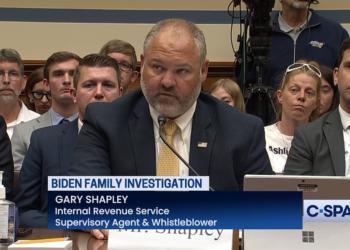President Donald Trump plans to use tariffs in the coming days to pursue a range of disparate and sometimes conflicting goals, from pressuring neighboring countries on immigration and boosting domestic manufacturing to penalizing trade partners for their own tariffs.
Critics, including longtime free-market economists and trade experts, have criticized Trump’s tariff plans as incoherent and economically damaging.
Trump officials and allies, though, argue that there is no contradiction in his agenda. They portray tariffs as an economic multitool knife that can be used for many purposes.
“I think that the president’s agenda is one of the boldest and most-needed pro-America agendas in decades,” said Nick Iacovella, executive vice president of the Coalition for a Prosperous America, an outside group that has backed Trump’s tariffs. “He’s exactly right to recognize that tariffs are an important tool to accomplish the vision that he has.”
Trump is imposing or threatening tariffs for at least four distinct purposes:
- Trump has already imposed tariffs on Mexico and Canada. The administration maintains that those tariffs are meant to pressure the United States’s neighbors into cracking down on illegal immigration and drug smuggling.
- He’s also added tariffs on China. The purpose of those tariffs is to counter China’s unfair trade practices and pressure the Chinese government to halt the flow of fentanyl into the U.S.
- Trump has also imposed tariffs on imports of steel and aluminum. Those have a different aim: to protect domestic manufacturers. He’s begun the process of implementing similar tariffs on copper, timber, and lumber. He’s said similar measures could be in store for automobiles, pharmaceuticals, agricultural products, and more in different circumstances.
- On April 2, he is poised to move ahead with the biggest tariffs yet, namely, the reciprocal tariffs on countries that put up trade barriers to U.S. goods. Those tariffs could be considered leverage meant to promote free trade, given that they decrease as long as trade partners also lower trade barriers.
“Market access to the U.S. is seen as an all-purpose tool that can be used to achieve all kinds of things,” said Karthik Sankaran, a researcher at the Quincy Institute and a longtime foreign exchange strategist and trader.
In contrast, the Republican Party for decades before Trump generally sought to increase access to domestic and foreign markets as a matter of principle. The basic logic was that free trade generates wealth.
The Trump team, on the other hand, has offered varied arguments for imposing tariffs that are sometimes in tension with one another.
For example, Trump, Vice President JD Vance, Treasury Secretary Scott Bessent, and other top officials have repeatedly said they want tariffs to encourage manufacturers to locate in the U.S.
But they’ve also said they aim for the tariffs to bring in enough revenue to provide major tax relief to American citizens. However, if foreign companies pay the tariffs, that means they are not relocating to the U.S.
“The administration has put forward so many rationales for tariffs it’s hard to know what they really want – revenue, jobs, reciprocity, lower trade deficit, bargaining leverage,” Doug Irwin, a professor at Dartmouth College and a trade expert, wrote in an email to the Washington Examiner. “[S]ome of these are contradictory.”
Trump’s advisers have said they see tariffs as a tool that can be used for varying goals in different circumstances, even those at odds with one another. Bessent, for example, said in his confirmation hearing that tariffs had three uses: remedying unfair trade practices, raising revenues, and as a negotiating tool.
Commerce Secretary Howard Lutnick, who has aggressively promoted Trump’s promise of reshoring manufacturers, has also strained to reassure Canada and Mexico that the tariffs placed on their goods are not about trade or manufacturing. “This is not a trade war. This is a drug war,” he said.
That argument, though, has been muddied by Trump, who suggested that Canadian auto manufacturers, for instance, might be supplanted by domestic auto production. He also insisted that Canada should join the U.S. as the 51st state.
Trump’s advisers have advanced sophisticated theories for why intervention, both in the form of tariffs and other actions by the federal government, is needed. They argue, essentially, that the dollar’s leading role in transactions around the world has led to an overvaluation of the currency, which has hurt U.S. manufacturing.
Sankaran has argued that there are at least four factions among Trump-aligned tariff proponents, all with different goals.
“At this point, it’s hard to tell exactly what the goals are because there’s so many of them,” he said of the Trump administration’s early tariffs policy.
Still, the one point that Trump, Vance, and others keep returning to is that they believe companies should be rewarded for building in the U.S. and penalized for locating elsewhere.
“At the same time that they are seeking to increase the industrial capacity of the United States and create a very large number of jobs in the manufacturing sector, which will overwhelmingly benefit the working class people of this country … they are looking to use tariffs to actually raise revenue to directly benefit those people as well, to lower their liability for taxes,” Iacovella said.














